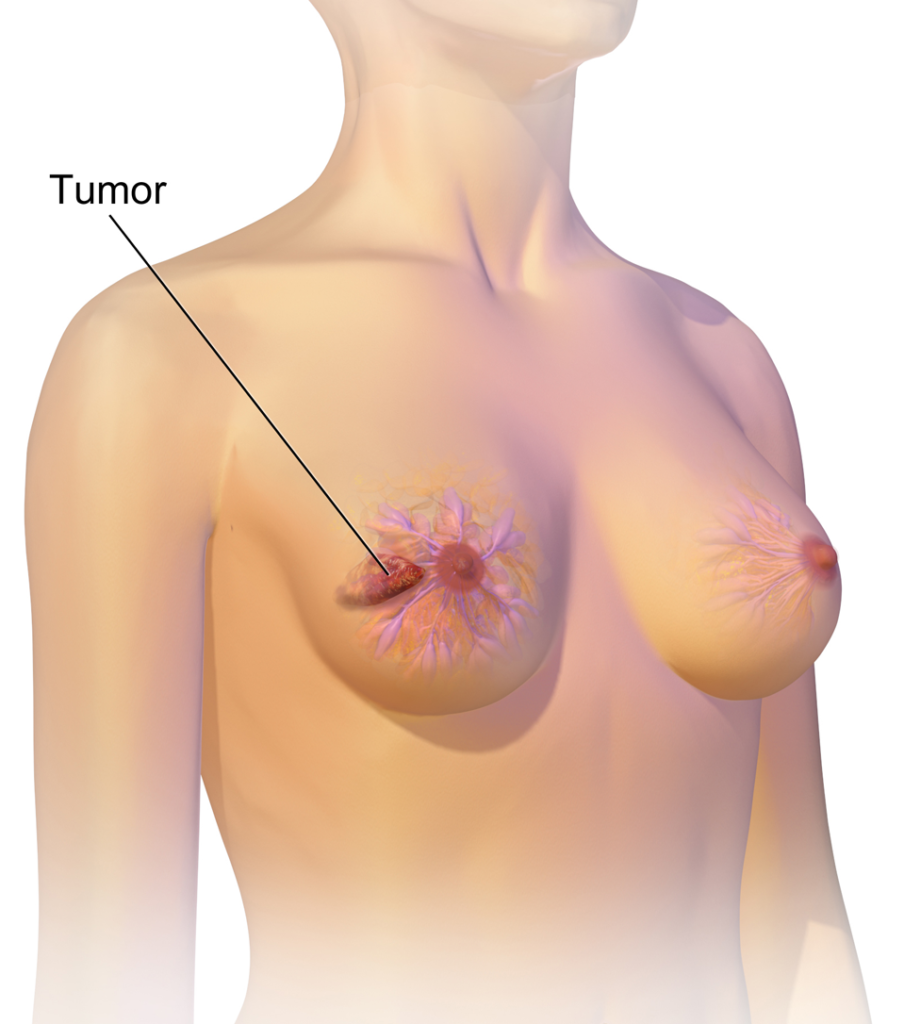Breast Cancer
Breast cancer is a type of cancer that begins in the cells of the breast. It can occur in both men and women, but it is far more common in women. Breast cancer can develop in different parts of the breast, such as the ducts, lobules, or the connective tissue.
Here are some key points about breast cancer:

- Risk Factors:
- Gender: Women are at a higher risk than men.
- Age: The risk increases with age.
- Family history: Having close relatives with breast cancer may increase the risk.
- Inherited gene mutations: Certain gene mutations, like BRCA1 and BRCA2, are associated with a higher risk.
- Hormone replacement therapy (HRT): Long-term use of HRT may increase the risk.
- Personal history: Previous breast cancer or certain non-cancerous breast diseases may increase the risk.
- Signs and Symptoms:
- A lump in the breast or underarm.
- Changes in the size, shape, or appearance of the breast.
- Unexplained pain in the breast or nipple.
- Changes in the skin over the breast, such as redness or dimpling.
- Nipple discharge other than breast milk.
- Diagnosis:
- Mammogram: X-ray of the breast used for early detection.
- Biopsy: Removal of a small tissue sample for examination under a microscope.
- MRI and ultrasound may also be used in diagnosis.
- Types of Breast Cancer:
- Ductal Carcinoma In Situ (DCIS): Non-invasive cancer where abnormal cells are found in the lining of a breast duct but haven’t spread outside the duct.
- Invasive Ductal Carcinoma (IDC): The most common type, where cancer cells invade nearby tissues in the breast.
- Invasive Lobular Carcinoma (ILC): Cancer starts in the milk-producing glands and invades nearby tissues.
- Staging:
- Staging helps determine the extent of the cancer and helps guide treatment decisions.
- Treatment Options:
- Surgery: Removing the tumor or the entire breast.
- Radiation therapy: Using high-energy rays to target cancer cells.
- Chemotherapy: Using drugs to kill cancer cells or stop their growth.
- Hormone therapy: Blocking hormones that fuel some types of breast cancer.
- Targeted therapy: Targeting specific molecules involved in cancer growth.
- Survival Rates:
- Survival rates vary based on factors like the stage at diagnosis and the type of breast cancer. Early detection generally improves outcomes.
- Prevention:
- Regular mammograms and breast exams for early detection.
- Lifestyle factors: Maintaining a healthy weight, regular exercise, limiting alcohol intake, and avoiding smoking.





